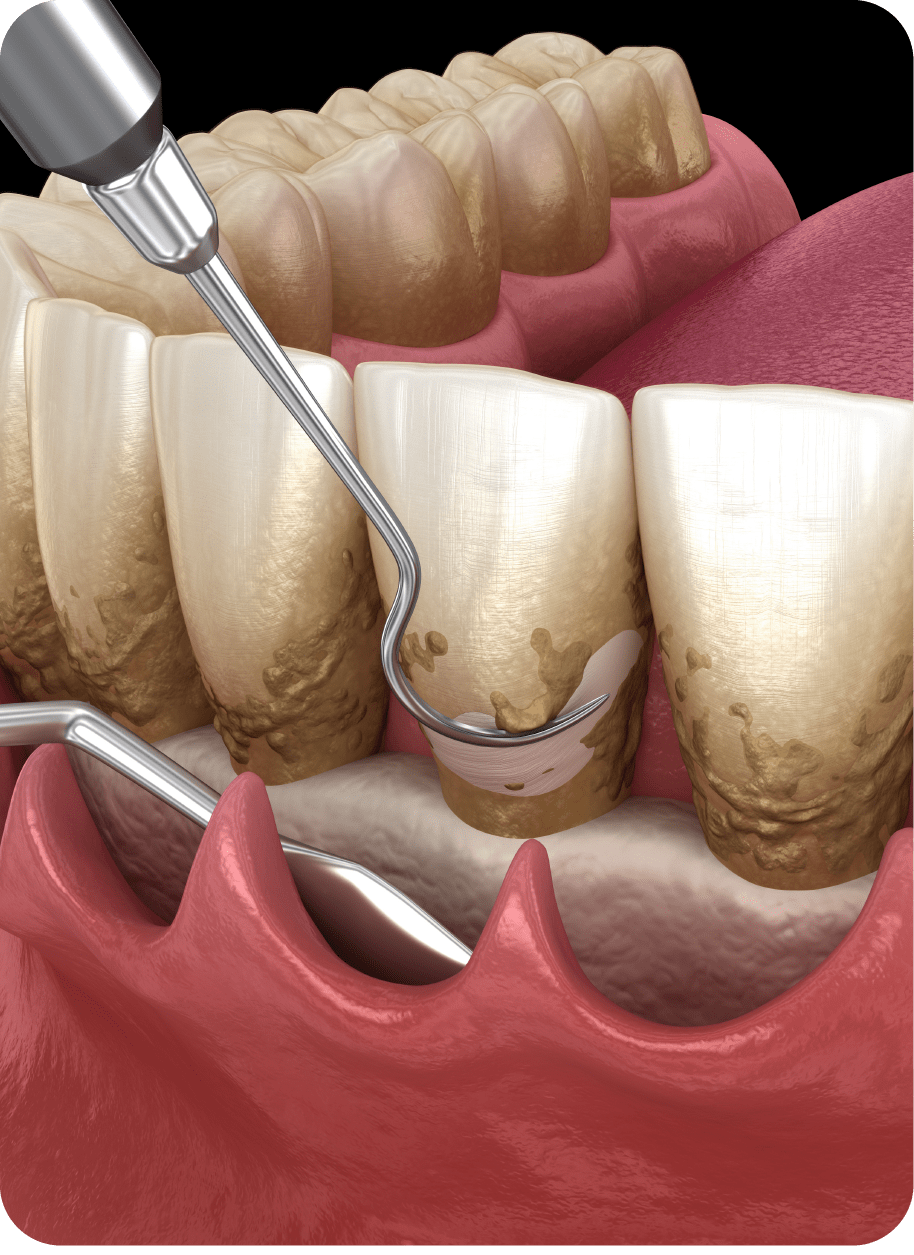Osseous Surgery in Memphis TN
OR CALL (901) 300-4162

What is Osseous Surgery?
Osseous surgery is one of the most common surgical procedures used to treat advanced periodontal disease. When gum pockets go almost all the way down the side of the tooth, and tartar and plaque have built up down each side of the tooth root, less invasive procedures may not enable your periodontist to remove all hidden bacteria and plaque. Osseous surgery allows the gums to be pulled away from the teeth and a complete cleaning to take place before the gums are reattached to the teeth surfaces.
Being able to access the entirety of each tooth’s root for cleaning, scaling, and planing permits more bacteria, plaque, and tartar (calculus) to be removed. Irregularities of the underlying bone can be made smooth, and gum tissue placed closer to bone and tooth surfaces to reduce the depths of gum pockets and help prevent periodontal disease from advancing.
What is Involved in Osseous Surgery?
If needed, sedation dentistry can be requested to alleviate anxiety during osseous surgery. Incisions are made around the teeth, and the gum tissue is pulled back slightly. All plaque and calculus (tartar) are removed, and bone irregularities are smoothed over. The gum tissue is puled closely around each tooth and sutured in place before a protective dressing is secured to cover the surgical area for the first few days of healing.
What Follow-Up Appointments are Required After Osseous Surgery?
Are There Drawbacks to Osseous Surgery?
Cosmetically, other treatment options may be considered depending on how the new gumline will align with the surrounding teeth and tissues. An alternative to osseous surgery is the Laser Assisted New Attachment Procedure (LANAP), which typically results in less gum shrinkage and tooth sensitivity, and a more even look. However, for those for whom LANAP is not an option, osseous surgery may still be the best choice.
Contact us today for a consultation and find out whether osseous surgery or LANAP is the best choice for you.


